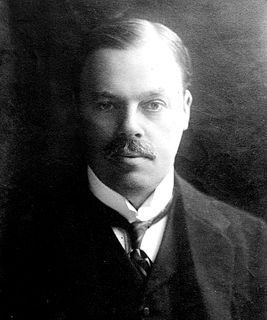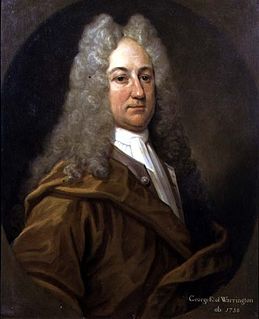
Viscount Rothermere, of Hempstead in the County of Kent, is a title in the Peerage of the United Kingdom. It was created in 1919 for the press lord Harold Harmsworth, 1st Baron Harmsworth. He had already been created a baronet, of Horsey in the County of Norfolk, on 14 July 1910, and Baron Rothermere, of Hemsted in the County of Kent, in 1914. Every holder of the titles has served as chairman of Daily Mail and General Trust plc. As of 2016 the titles are held by the first Viscount's great-grandson, the fourth Viscount, who succeeded his father in 1998.

Baron Avebury, of Avebury in the County of Wiltshire, is a title in the Peerage of the United Kingdom. It was created 22 January 1900 for the banker, politician and archaeologist Sir John Lubbock, 4th Baronet. He was succeeded by his eldest son, the second Baron. On his death the titles passed to his nephew, the third Baron. He was the son of Hon. Harold Fox Pitt Lubbock, fourth son of the first Baron, who died in 1971. The title then passed to the third Baron's first cousin, the fourth Baron, the son of Hon. Maurice Fox Pitt Lubbock, sixth son of the first Baron. The fourth baron was a Liberal Democrat politician and one of the ninety excepted hereditary peers who remained in the House of Lords after the passing of the House of Lords Act 1999. He was succeeded by his son, the fifth Baron, in 2016.
Baron Killearn, of Killearn in the County of Stirling, is a title in the Peerage of the United Kingdom. It was created in 1943 for the diplomat Sir Miles Lampson. He was the second son of Norman Lampson, youngest son of Sir Curtis Lampson, 1st Baronet, of Rowfant. Lord Killearn's eldest son, the second Baron, succeeded his second cousin once removed as fourth Baronet in 1971. On his death the titles passed to his half-brother, the third and present holder of the barony and baronetcy.

Baron Phillimore, of Shiplake in the County of Oxford, is a title in the Peerage of the United Kingdom. It was created in 1918 for the former Judge of the High Court of Justice and Lord Justice of Appeal, Sir Walter Phillimore, 2nd Baronet. The Phillimore Baronetcy, of The Coppice, had been created in the Baronetage of the United Kingdom on 28 December 1881 for his father Sir Robert Phillimore, who was also a noted lawyer and judge. The first Baron was succeeded by his son, the second Baron.

There have been three baronetcies created for persons with the surname Booth, one in the Baronetage of England and two in the Baronetage of the United Kingdom. The 1916 creation remains extant, the 1835 creation became extinct in 1896 and the 1611 baronetcy has been dormant since 1797. The senior line of the first creation was elevated to the peerage as Baron Delamer and Earl of Warrington.
There have been two baronetcies created for persons with the surname Aykroyd, both in the Baronetage of the United Kingdom for members of the same family.
There have been four baronetcies created for members of the Harmsworth family, all in the Baronetage of the United Kingdom. All recipients were brothers.
The Bagge Baronetcy, of Stradsett Hall in the County of Norfolk, is a title in the Baronetage of the United Kingdom. It was created on 13 April 1867 for William Bagge, Conservative Member of Parliament for West Norfolk. The sixth Baronet was Chairman of the West Norfolk District Council between 1976 and 1977.

There have been two baronetcies created for members of the Waterlow family, both in the Baronetage of the United Kingdom. Both titles are extant as of 2010.

There have been four Baronetcies created for persons with the surname Harris, two in the Baronetage of England and two in the Baronetage of the United Kingdom. One creation is extant as of 2010.
There have been five baronetcies created for persons with the surname Hill, one in the Baronetage of Nova Scotia, one in the Baronetage of Great Britain, one in the Baronetage of Ireland and two in the Baronetage of the United Kingdom. Three of the creations are extant as of 2008.
There have been six baronetcies created for persons with the surname Newton, three in the Baronetage of England, one in the Baronetage of Nova Scotia and two in the Baronetage of the United Kingdom.

There have been three baronetcies created for persons with the surname Dixon, all in the Baronetage of the United Kingdom.
The Raeburn Baronetcy, of Helensburgh in the County of Dunbarton, is a title in the Baronetage of the United Kingdom. It was created on 25 July 1923 for William Raeburn. He was head of the firm of Raeburn & Verel, Ltd, and also represented Dunbartonshire in the House of Commons as a Unionist. The fourth Baronet does not use his title.
The Goodson Baronetcy, of Waddeton Court, Parish Court, in the Parish of Stoke Gabriel in the County of Devon, is a title in the Baronetage of the United Kingdom. It was created on 18 January 1922 for Alfred Goodson.

The Yarrow baronetcy, of Homestead, Hindhead, in Frensham in the County of Surrey, is a hereditary title in the Baronetage of the United Kingdom.
There have been four baronetcies created for persons with the surname Morris, all in the Baronetage of the United Kingdom. As of 2014 two of the creations are extant.
There have been three Baronetcies created for the family of Walker, later known as Forestier-Walker.
There have been two baronetcies created for persons with the surname Hopkins, one in the Baronetage of Ireland and one in the Baronetage of the United Kingdom.










